
Полная версия
Pretty Iconic: A Personal Look at the Beauty Products that Changed the World
The Max Factor brand, founded by the man who literally invented the phrase ‘make-up’ (yes, really), is no longer sold in the States, where it first went on sale. I’d be very sad to see the same happen in Britain. We should cherish Creme Puff, beloved elder stateswoman of make-up and unarguably one of the most iconic beauty products of all time. I’m afraid it may be a case of use it now or lose it for ever.
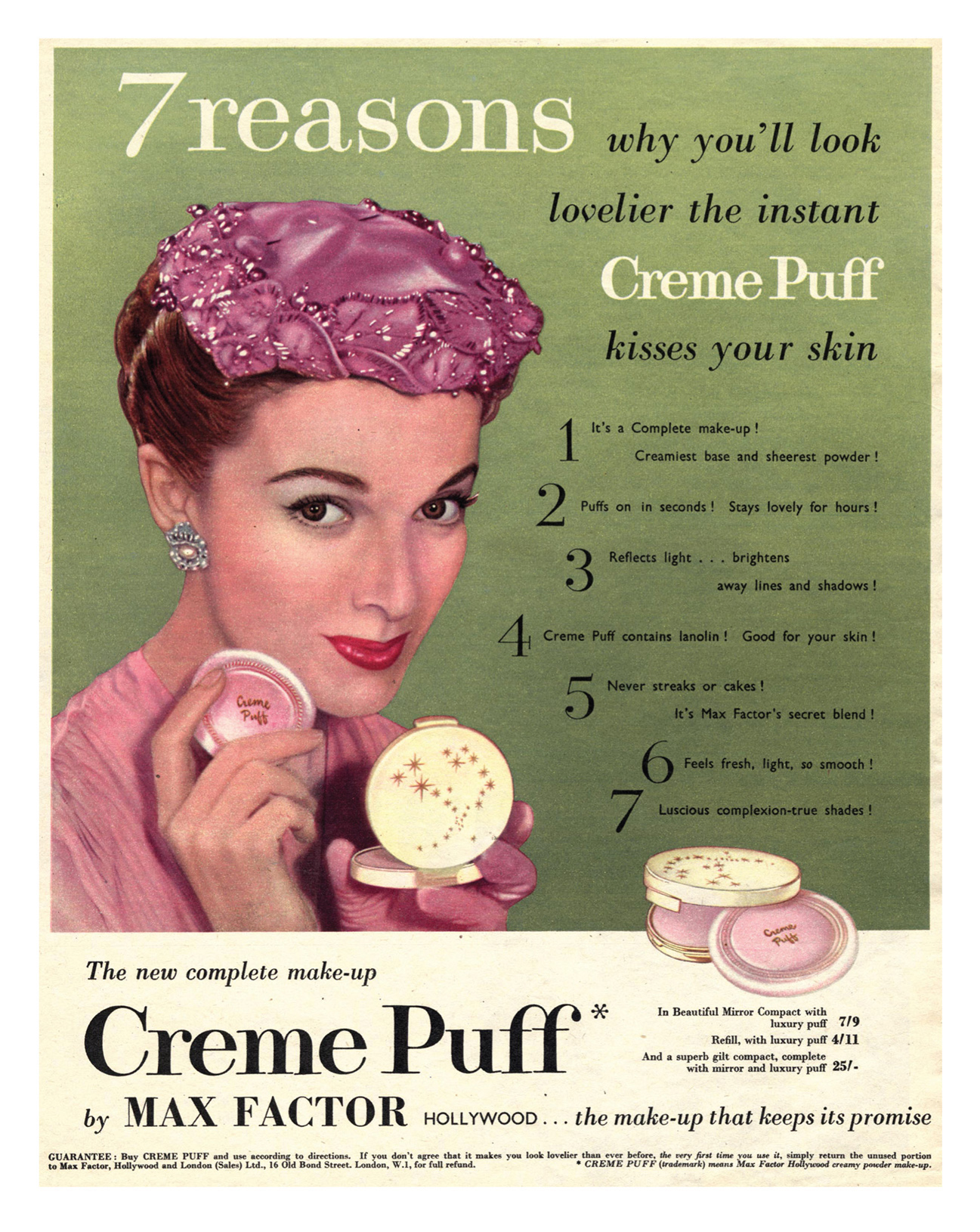
Clarins Cleansing Milks
My first foray into luxury skincare came via the Clarins catalogue, supposedly free but granted only after weeks of grooming a saleswoman who knew full well the schoolchild before her could barely afford a seven-inch single. I read this (and the ‘Clinique Directory’) like one might read a car repair manual, working out which products came in which order, where they were placed, how they might work, what they might do. The relative affordability of Clarins cleansing milks (and I really do mean relative, like gold to pavé-diamond platinum) made me save up my pocket money and Saturday job wages to get a bottle of my own, but not before I’d pinched some of my big brother’s girlfriend’s and sneakily refilled it with green Boots Natural Collection body lotion (I’m so sorry, Clare). It remains one of my more shameful decisions. I can only say in defence that I was stealing to invest in my future career.
Gratifyingly, the cleansers themselves (ivory ‘With Gentian’ and green ‘With Alpine Herbs’) remain unchanged since their launch in 1966 (the brand’s first products after their plant oils and an absolutely extraordinary bust firming contraption that looks like an industrial funnel attached to a garden hose) and I applaud Clarins’s apparent belief in ‘if it ain’t broke, don’t fix it’. These cleansers really are still wonderful. They shift make-up very thoroughly when used with a hot cloth (though I tend to use them in the morning and a balm, cream or oil at night), they leave no sticky residue, only softness and comfort, and they smell blissfully cosying. The packaging has changed a little – I miss the fat, weighty glass bottles of my teenage dressing table – but the modern version maintains the simplicity of the old. The new squeezy cap does, however, prevent tampering, which in my case is probably for the best.
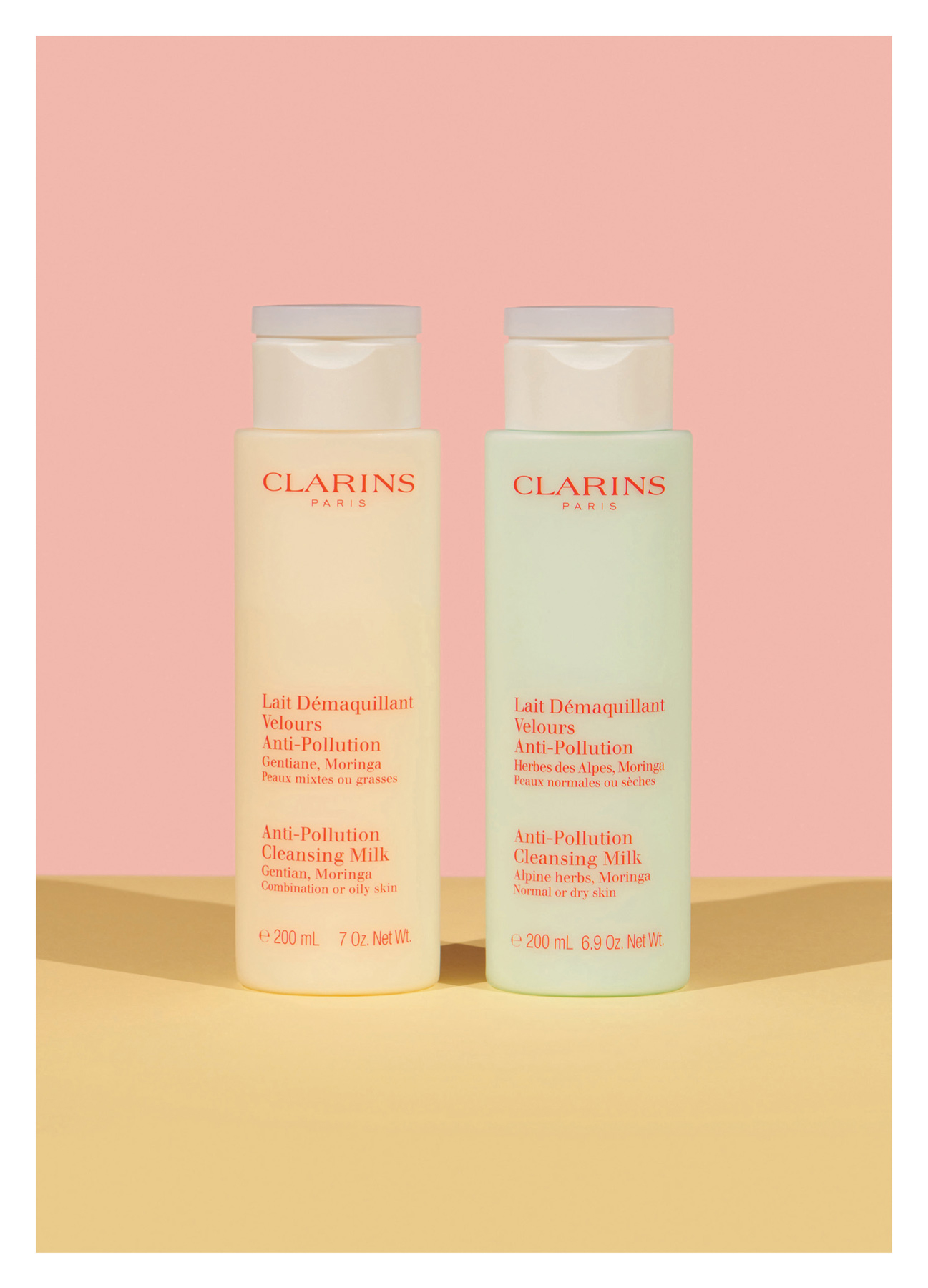
MAC Spice Lip Pencil
When someone sits down to write the history of the nineties, they should do so in MAC Spice lip pencil. This reddy-brown liner became the Canadian-born professional brand’s first ‘hero product’ and was the make-up accessory of the supermodel era; it graced a hundred glossy magazine covers and Linda Evangelista was never without it (I’m told she always conveniently needed to pee before shooting, then snuck on some Spice in the ladies’ loo if the make-up artist had failed to). It became the look for a generation of girls like me, who thought it the height of sophistication to wear a lip pencil five shades darker than the lips it outlined. After making a pilgrimage to buy my first Spice in Harvey Nichols (MAC’s only UK stockist at that time), and having nicked my mum’s peach CoverGirl lipstick, I debuted the look at a Salt-N-Pepa concert in Newport leisure centre. The band failed to show up but I didn’t care because I felt a million dollars.
Spice subsequently accompanied me to acid house clubs, to gigs and on capers, out on dates with inappropriate men. It accessorised Kookai hotpants, Lycra frocks from Pineapple, smiley T-shirts and red Kickers. I teamed it with fishnets, a velvet choker and beret and imagined myself in an Ellen von Unwerth shoot. I wore it with jeans and a wide headband and felt like Bardot, with a football shirt and Adidas Gazelles and thought I was Christy Turlington on the John Galliano catwalk. I was far from any of these things, but look back on Spice without a moment’s regret because, unlike so many products that completely sum up a fleeting moment in life, Spice is still a much loved, often used, part of my beauty kit. Only nowadays I wear Spice with a matching lipstick of brick red or terracotta brown, not a contrasting gloss the colour of Elastoplast.
Ardell Lashes
The age of the selfie has reintroduced so many old-fashioned beauty techniques that I’d quite happily have left in the history books with lead face powder and chastity belts, and yet I feel nothing but joy at the huge resurgence in popularity of false eyelashes. Falsies were invented in 1916 (later than one might perhaps imagine), on the set of the film Intolerance, for leading actress Seena Owen’s big close-up. The director wanted the lashes on Owen’s sad eyes to skim her cheeks, and so the film’s hairdresser threaded wig hair onto some gauze and glued it to her lashline. Reusable false lashes went into production – initially using real hair or animal fur – and became a key element in almost all iconic Hollywood beauty looks. Nowadays, lashes are synthetic and mainly come on strips, but there’s still something so brilliantly decadent and utterly mad about sticking fake hair onto eyelids with glue, something so satisfying about fluttering huge lashes more at home on Tweetie Pie. No one can be bothered every day, of course, but the occasional application of falsies is a wonderful thing when you know how – and it really is so much easier than you may fear.
First, the lashes must be cut to size (unless they’re half lashes – those designed to be worn on the outer corners only and often just the thing for a more natural look). Cutting is important because if a strip lash is even the tiniest bit too wide for your lids, then the end will hit the bridge of your nose and peel off at some point during the course of the night, and a droopy falsie is never a good look. Cut from the outside; it’s tempting to preserve maximum flutter and cut from the inside, but this will rob the fan-shape of its gradual incline, and look unnatural. Second, always, always allow the glue (preferably Duo) to become a little dry and tacky. Wet glue is too messy and makes the lash too mobile and prone to wandering maddeningly onto fingers during application. Third, apply a little black liner and black mascara to disguise any joins. That’s it.
There are hundreds of wonderful lashes on the market. I love MAC 20, Red Cherry Joan, We Are Faux Carey Red and a host of designs by Eylure, but the affordable drugstore brand Ardell makes my favourites of all – and not only because of their deliciously naff 1970s branding. Ardell’s selection of designs is vast and caters for all eye sizes and tastes: from spiky and Twiggy-like to sleepy noir-era Bacall, to sumptuous feline flutters à la Loren. They either come without glue (my preference) or with Duo (the best). The invisible bands mean they can be worn more convincingly by chemotherapy patients than many other lashes, and, on a similarly practical level, they come out of the packaging without tearing or warping, go on like a dream and the tapered shapes and soft materials ensure that, generally speaking, they look more Old Hollywood, less Spearmint Rhino.
Johnson’s Baby Lotion
Among my earliest memories is one of lying on a towel as a young toddler, fresh from the bath, toasty from the nearby coal fire, giggling hysterically as my grandmother ‘iced me like a birthday cake’ with Johnson’s Baby Lotion, squeezed direct from the bottle like a piping bag. Forty years on, it remains one of my favourite smells of all time. It’s the smell of comfort, of security, of uncomplicated and predictable times. One deep whiff is like being cosseted in a warm blanket and tucked tightly and cosily into a single bed. It’s a fragrance I always think of as smelling exactly how it looks – pink, mellow, delicate, old-fashioned, soft and sweet. It’s frankly no good on my dry skin (it works as a cleanser for light make-up at a push, and is a nice body lotion for normal skins), but I love the smell so much that I’m never without a bottle in the house. If I feel inexplicably sad or stressed out, I flip open the cap and inhale.
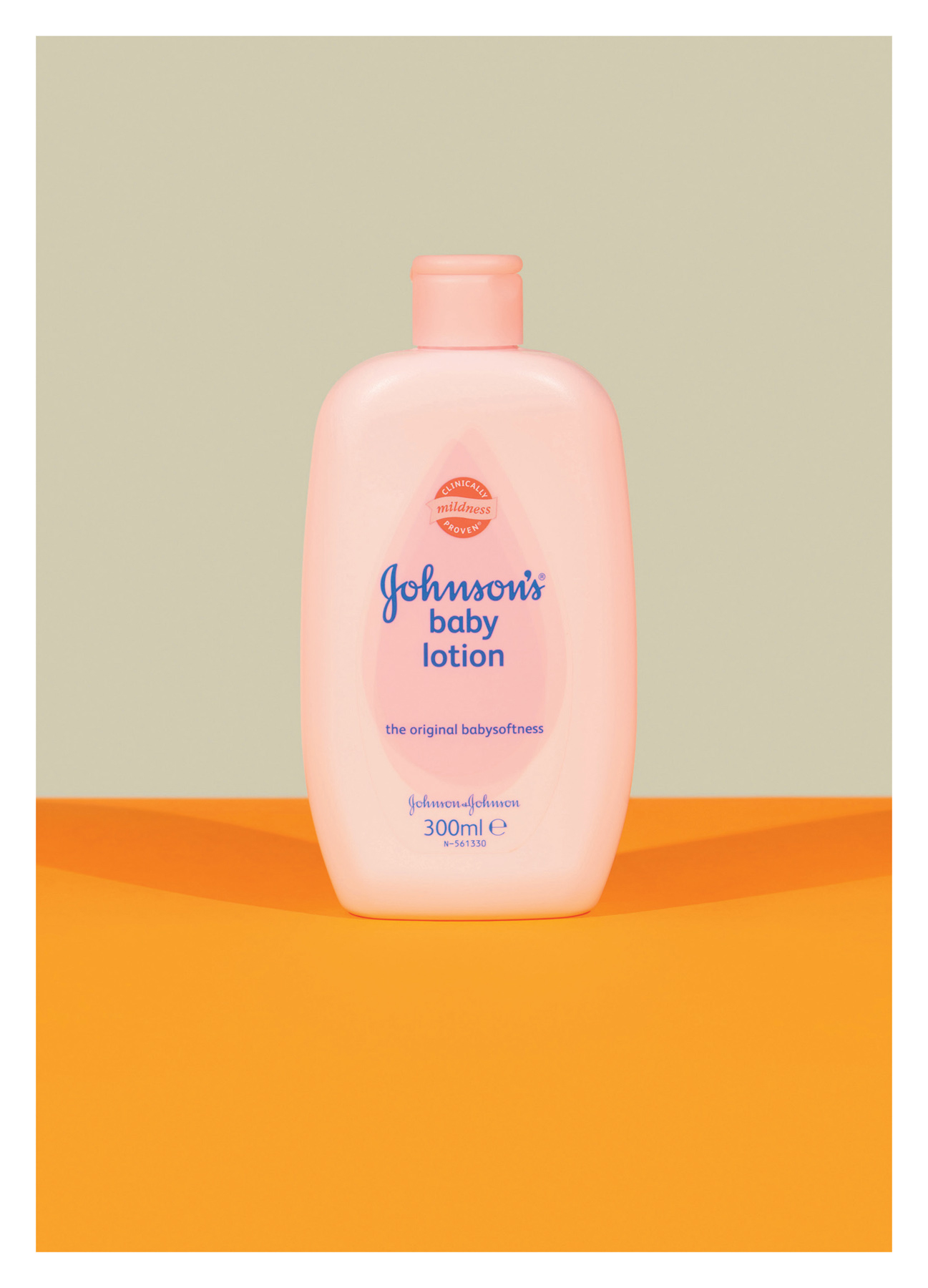
Clarins Beauty Flash Balm
I feel about Beauty Flash the way I feel about olives: I should like them, they’re very much my kind of thing, other people love them and I doggedly keep trying to join in, but I just can’t pull it off. This is a balm that goes over moisturiser to plump and blur lines, pep up tiredness and general haggishness, but on me – and apparently me alone – it has always peeled off in clumps as soon as I attempt to apply make-up over the top. No matter, because what is indisputable is Beauty Flash’s iconic status. This is the product, I think, that first tabled the notion of primer – a skincare/make-up hybrid to smooth and perfect the complexion in readiness for foundation. There was nothing else like it when I first tried it some twenty-six years ago, and while things may have since moved on considerably to include primers for every conceivable skin type and gripe, blur balms and light reflectors for instant de-ageing, and so on, Beauty Flash’s countless fans remain utterly devoted to the original. I almost envy them.
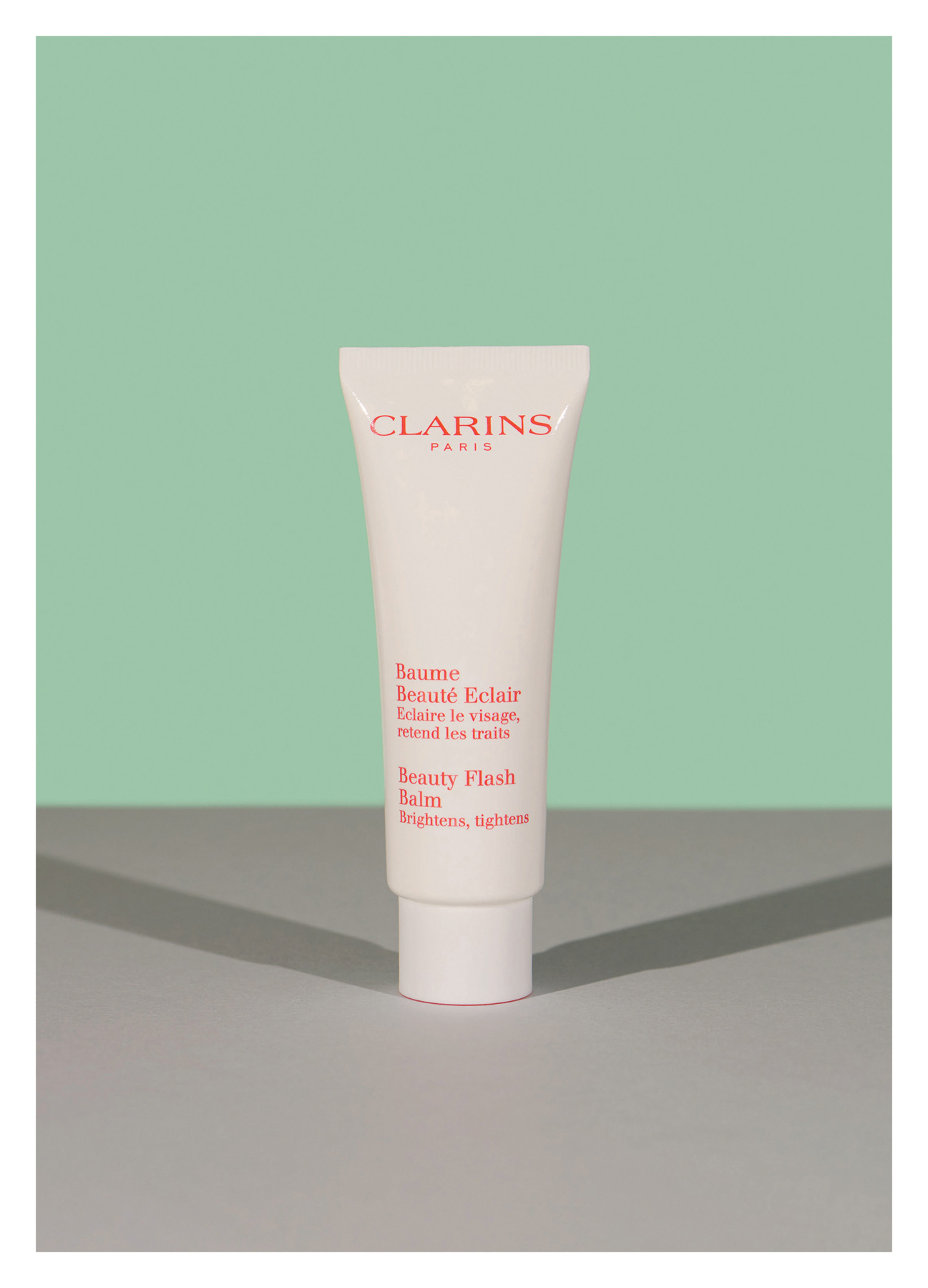
Guerlain Météorites Pearls
If beauty had a grande dame, an impossibly glamorous French nana, who turned up at parties in a great dress and smoked Sobranie cigarettes through a Bakelite holder, she would be Guerlain’s Météorites. These are multicoloured pastel pearls of face powder designed to be swirled together with a brush then buffed into the skin to brighten and illuminate. Launched in 1987, Météorites may have looked outwardly like an antique shop find, but was remarkably ahead of its time. For years, it was one of very few consumer powders designed to give the complexion a radiant, rather than matte, finish (the radiance trend didn’t really hit the mainstream until Revlon launched Skinlights over a decade later), and the first to introduce the concept of powder balls (or ‘pearls’), allowing several different colours or shades to be used simultaneously to give a multi-dimensional look, before technology could provide it in traditional pressed formulations. Météorites was prohibitively expensive for many, but hugely influential on the mass market. Body Shop, Boots and Avon soon made bronzer, blusher and face powder in pearls, taking them from inaccessible luxury to full-on beauty craze. Météorites remained aloof and became a beauty icon with a devoted cult following.
Nowadays, illuminating powders are ten a penny and I won’t pretend that Météorites is my own weapon of choice, but I’m not sure I’d have so many to choose from were it not for Guerlain’s trailblazing. The pearls come in a stained-panel pot not a million miles from a Tiffany lamp, which when opened, releases the delicious powdery fug of crushed Parma Violet sweets. The whole thing is bulky, breakable and wholly impractical for any manner of travel, and should be moored to some art nouveau dressing table next to a string of beads and a Dirty Martini. But Guerlain has made some concessions to modernity: there are now different colourways for more skin tones, pressed versions, travel containers and various seasonal limited editions. Each is as unfeasibly pretty as the next.
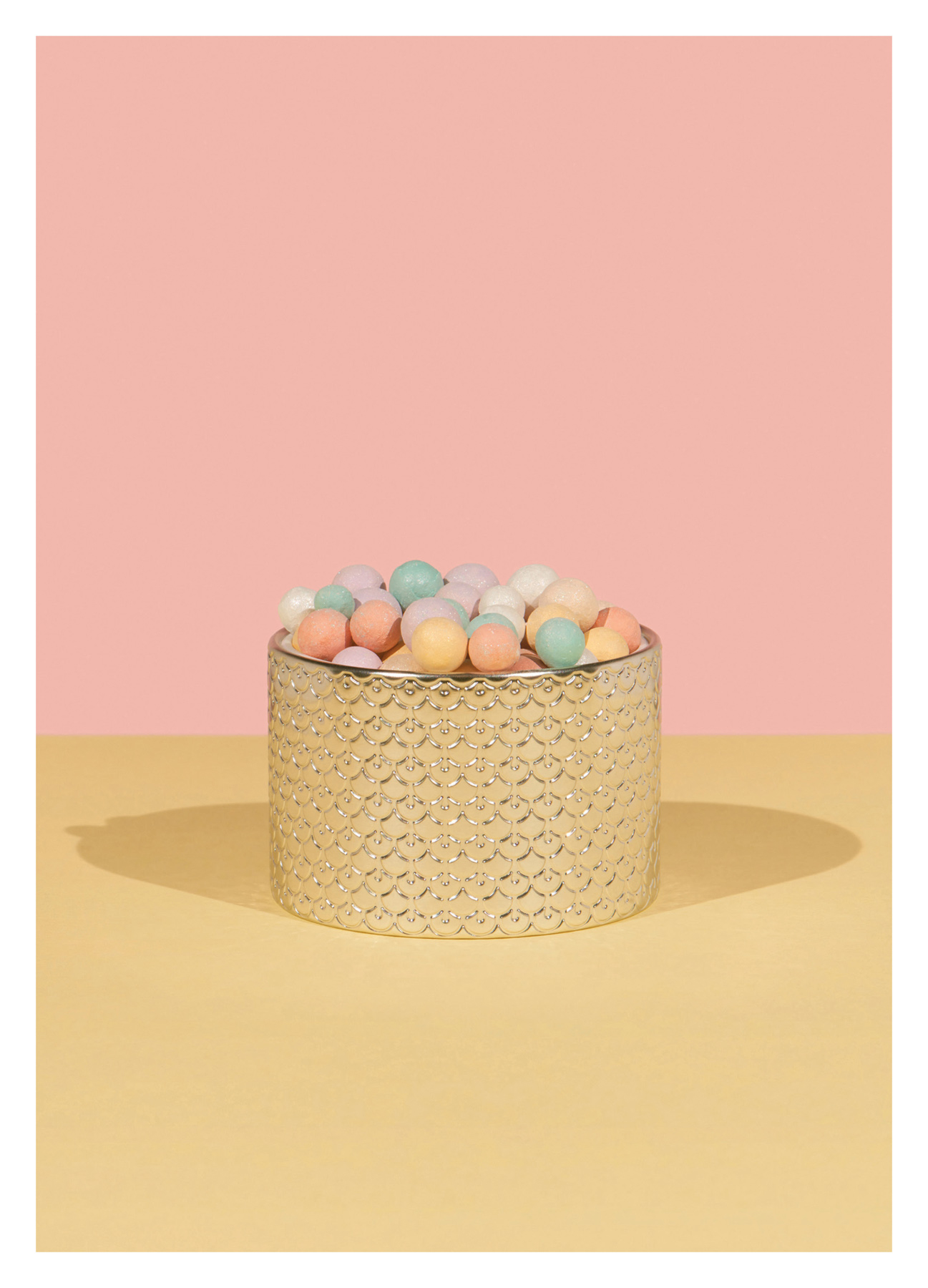
Carmex
There was a time in the late eighties/early nineties when a 79-cent pot of Carmex lip balm had as much cachet as an army surplus-store MA1 flight jacket and selvedge Levi’s – perhaps more, since it had to be scored in an American drugstore and flown home. The opaque glass jar topped with a bright yellow printed tin cap, almost entirely unchanged since its 1937 launch by cold-sore sufferer Alfred Woelbing, represented the kind of vintage Americana we Brits were already lapping up via Levi’s 501 commercials, Dax Wax and Athena airbrush prints of James Dean.
But those in the industry were ostensibly more concerned with its contents. Unlike Vaseline and Blistex, Carmex had a matte finish. It didn’t interfere with the shine-free lipsticks of the day, and didn’t cause lip pencils to lose friction and veer off-course. It was utilitarian, serious, slightly butch. All budding and actual make-up artists carried it in their kit and for many years the staple make-up look for all male models and musicians on shoots was ‘foundation, Kryolan concealer, powder, Guerlain bronzer, clear mascara, Carmex’ (I couldn’t tell you how many times I dutifully performed this routine). Off set and away from the industry, there was great snob-value in pulling a jar of Carmex from your mini backpack and so understandably, but somewhat disappointingly, Carmex saw their chance and soon the balm was available in UK pro-supply stores and fashion boutiques (including the original Space NK, which also sold juices, handbags and frocks) and later even Boots and Superdrug. It led the way for Smith’s Rosebud Salve – another nostalgically tin-packaged balm – and for Vaseline to repackage its petroleum jelly in a flat tin and rebrand it as ‘Lip Therapy’.
With the curse of accessibility and the benefit of perspective, Carmex lost its allure. Its shine-free finish is still useful, if no longer unique, but its lip-saving capabilities are bettered elsewhere. I find men still love the camphor smell, non-greasy feel and ungirlie packaging, which occasionally gets a limited edition makeover (the recent Peanuts/Snoopy and superheroes collaborations were a well-conceived delight). I rarely use it now, but always keep a pot in my kit to remind me of exciting times and endless possibilities, and for the occasional mentholated whiff of an industry that was to change my life for ever.
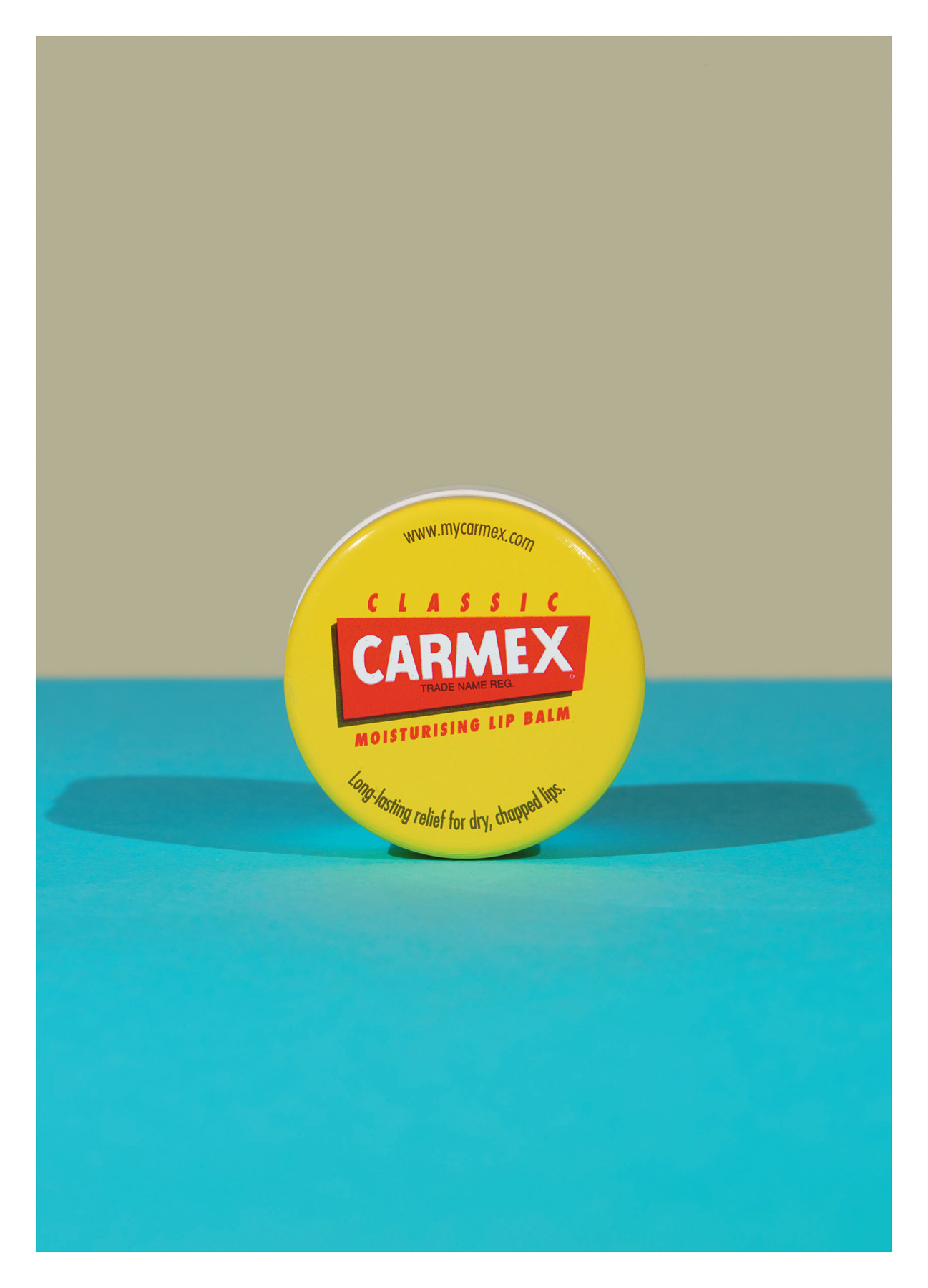
Nars Orgasm Blusher
One can almost chart British society’s increasing liberality through the growing confidence with which the average woman asks a Nars sales assistant for an Orgasm. As recently as 2010, the inclusion of this powder blusher in my Guardian Weekend beauty column prompted one reader to accuse me of wilfully setting up the women of Britain for humiliation. All I could say is that it’s worth a moment’s shame, because Nars Orgasm is a must. I can think of few other colour cosmetics – least of all, complexion products – that genuinely look pretty on every skin tone, from white to olive to brown to black. The clue is in the name. This is a blusher designed to mimic the flush of colour to the cheeks at sexual climax or, in less florid language, it makes you look just-shagged. A smart and attention-grabbing way to market a product, for sure. Orgasm launched in 1999 and its name certainly helped it get plenty of publicity and celebrity endorsement (Jennifer Lopez, at the height of her fame, was rarely seen without it), but it’s still absolutely true that just like a climactic rush of blood to the face, Nars Orgasm makes almost everyone look better.
The secret is Orgasm’s perfectly balanced mix of peach and pink pigments that both brightens pale or sallow complexions and neutralises rosy ones, and teams with red and pink lipstick as well as it matches apricots and peach. A subtle, shimmery gold fleck stops it ever looking ashy or chalky on dark skins. This universal quality is what makes Orgasm not only Nars’s biggest seller (120 are sold every hour of the day), but also the matriarch of an entire franchise including spin-offs like Super Orgasm (a hyper-glittery version of the original), the Multiple Orgasm (a stick creme blush and an open goal for the product namers, let’s face it), a nail polish, lip gloss and illuminator. But none is as indispensable as the original. I’d only discourage its use on those whose cheeks are scarred or bumpy, as Orgasm’s slight shimmer will do them no favours. But I’d urge those same women to simply choose another (ideally matte) shade from Nars’s range, perhaps Sex Appeal or Zen. Because while it’s impossible to describe any brand as the best at everything, I have no hesitation in declaring Nars the very best at blush.

Clinique 3-Step
Clinique is my first love, and alongside a hereditary skin condition that saw me in and out of dermatologists’ offices throughout my childhood, sparked my enduring passion for skincare. Like every woman I know, I still have many of Clinique’s products on my bathroom shelf and dressing table (you will need to prise Bottom Lash Mascara, Take The Day Off Cleansing Oil and Superbalm from my cold dead hands), and yet I haven’t used its iconic and revolutionary 3-Step skincare system for decades. But I still give it huge credit and reverence, because much like a teenage boyfriend who introduced me to great music and nightlife, but ultimately wasn’t for me, 3-Step represents a moment of awakening and explosion in my curiosity and knowledge.
The three-part regime, developed by respected dermatologist Dr Norman Orentreich and Estée Lauder executive Carol Phillips in 1968 (and barely changed since, the addition of a little hydrating hyaluronic acid aside), comprises a facial soap, four numbered salicylic acid liquid exfoliators of increasing strength (at time of writing, a new alcohol-free version is in the pipeline), and a pale yellow moisturiser for all skin types. Fragrance-free and allergy tested – unheard of in those days – it introduced the concept of exfoliation (the removal of dead skin cells to reveal brighter, newer, smoother skin beneath) to the masses, was the first nationally available dermatologist’s range (others were sold locally, in anonymous medication bottles direct from doctors’ offices), and, as such, revolutionised the entire cosmetics industry. Customers were given an on-counter analysis using a ‘computer’ (and when I say computer, I mean something that nowadays has more in common with an abacus), and prescribed the specific soap and clarifying lotion for their needs.
In 3-Step, Clinique also introduced the concept of functional, rather than needlessly fancy, premium skincare for the masses, and its packaging – pared down, clean, stylish and minimal – was photographed by the great still life photographer Irving Penn in a series of iconic advertisements without model or figurehead, cleverly appealing to all women, regardless of age, colour or skin type. The products, dressed only with a toothbrush, were sold as the new basics: the white T-shirt and jeans of every woman’s skincare wardrobe, onto which all other lotions or potions were to be layered. This core message – three simple products and three quick steps for better skin – proved enormously successful and endures to this day, and provided the basis for an entire brand of simple, effective, problem-solving cosmetics upon which so many of us still rely.
And yet despite the fact that it remains the world’s bestselling skincare routine, 3-Step can still be described as a cult. Women (and men – the Clinique For Men range differs only in packaging) who love 3-Step, really love it, and will countenance no other regime. And I certainly won’t argue – I’ve seen tremendous results on skin of all ages. Personally, I simply cannot get on board with facial soap in any guise; there are liquid exfoliants I prefer (though they might not exist if it weren’t for Clinique’s groundbreaking Clarifying Lotion), and the mighty Dramatically Different Moisturizing Lotion isn’t mighty enough for my naturally drier-than-sawdust face. But none of this matters. It works for millions, it may work for you, and no one can begin to deny that it permanently changed how most of us see skincare. Clinique 3-Step changed the world, and respect is very much due.
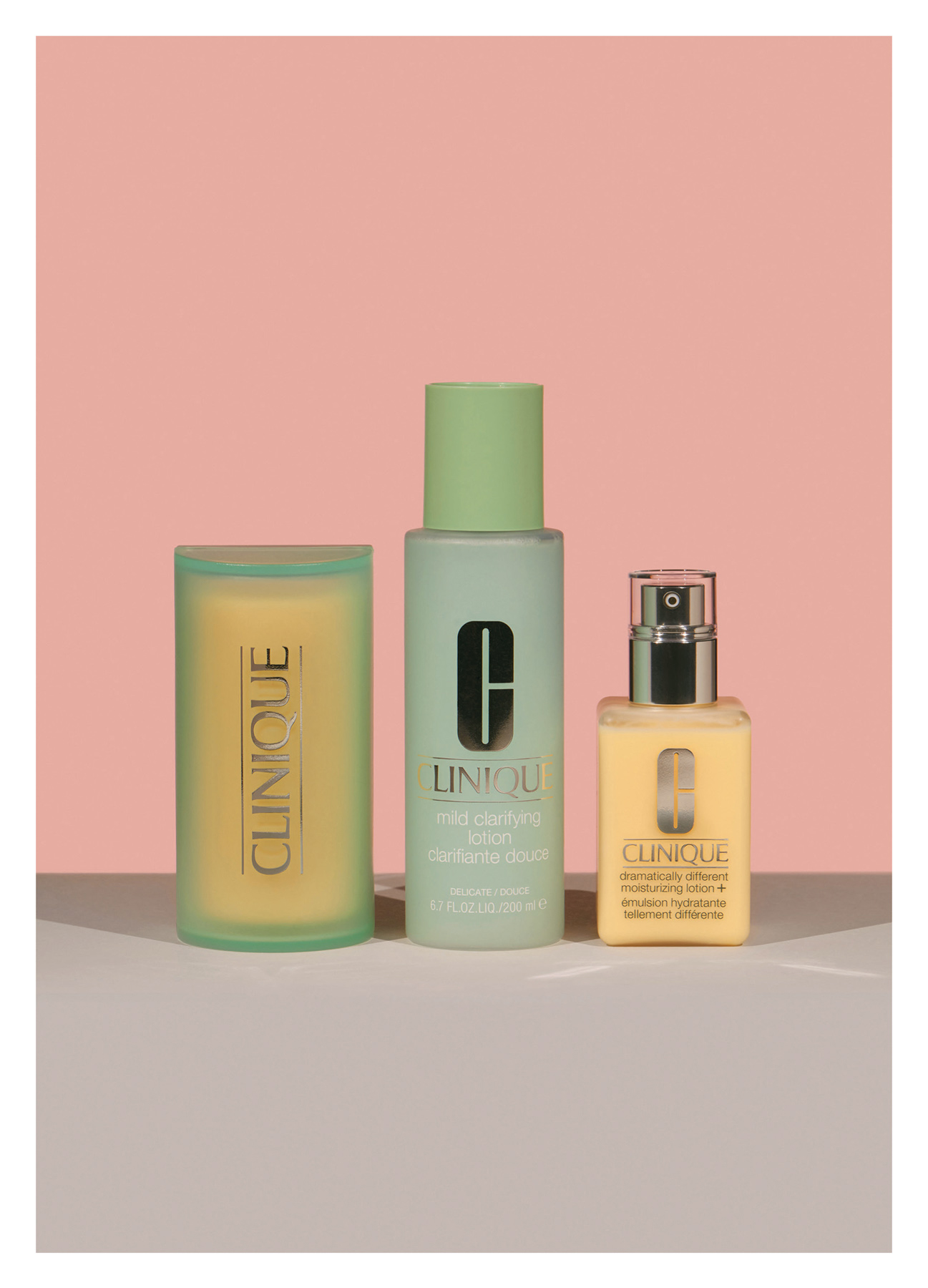
Weleda Skin Food
I can never lay claim to being a great lover of natural skincare. Ethics are certainly important, and I am all for paraben-free if that’s important to you (the evidence against them is woolly at best, and most of us eat parabens every day, so I’m sceptical, to say the least). I’m certainly a lover of many essential oils and balm cleansers, I choose organic milk to pour in my tea, boil organic eggs for my breakfast, but when it comes to skincare, my priorities are efficacy and results – and in my view, those usually come from a combination of the best of both science and nature, not from homeopathy for its own sake.
Skin Food, by Swiss-German health shop beauty brand Weleda, is a notable exception. It’s a rich, unctuous and affordable balm made from 100 per cent natural ingredients like almond oil, beeswax, calendula, rosemary, pansy and chamomile, for the purpose of moisturising dry faces and bodies. There’s something so lovely about its slightly medicinal metal tube and 1970s earth mother green design. But the product, sold at a rate of one every thirty seconds, is the real star here. Used by Victoria Beckham, Alexa Chung, Julia Roberts, Winona Ryder, Adele, a million models, make-up artists and, erm, me to baste my face like a turkey on long-haul flights, Skin Food acts as the name suggests: it’s exactly what to reach for when your skin feels peckish for something lovely, and leaves face and body snug, cosseted and comfy. I adore its gorgeous botanical smell, its reasonable price point, its assured place next to mung beans and nut bars in health food stores, its integrity and modesty. But most of all, I love that Skin Food has steadfastly stuck to its guns through every imaginable beauty trend and, almost a hundred advertising-free years after launching, is as relevant and more widely loved than ever, like some kindly great-grandmother who always quietly knew best.
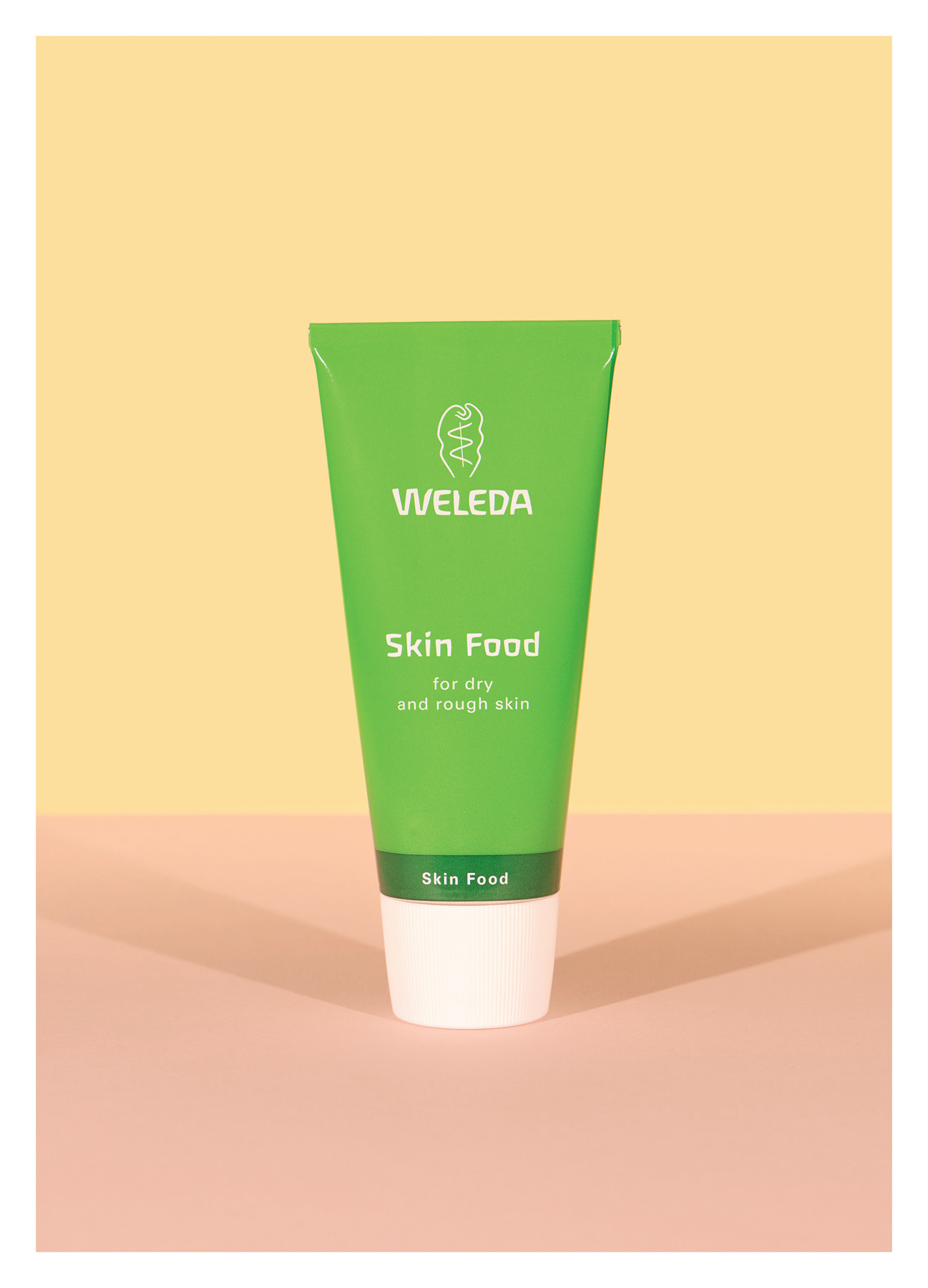
YSL Touche Éclat
Touche Éclat is arguably the most iconic make-up item of all time. The evidence can be seen everywhere: make-up artists referring to a ‘touche éclat look’ (as one might use the term ‘Hoover’ for vacuum cleaner) when they actually just mean the artificial adding of brightness; men raiding their wives’ make-up bags for an instant pick-me-up; women who own no other make-up keeping a regular stock to perk up sleepless eyes; a thousand copycat products; sales figures so vast that this one gold tube is a brand all on its own. But oh, Touche Éclat, our own relationship is complicated. I first discovered this elegant gold clicky pen of salmon-pink cream in the early nineties, when it had secured its place in every make-up artist’s kit I invariably poked my nose into. The buzz escalated outside the professional world, partly thanks to the explosion of celebrity culture and countless ‘What’s in my make-up bag’ interviews with A–Z list actresses and popstars, all wildly singing its praises. Somewhere in this process, Touche Éclat became known as a concealer, and this, for me, is where my issues began.
Touche Éclat is not a concealer. It is a brightening corrector, and one launched way before any other mainstream brands had considered their usefulness (nowadays, correctors are everywhere). On white skin, its sheer pinky hue helps cancel out grey tones commonly found under the eyes, and highlights cheekbones to make them pop. It does not cover spots, blemishes, patches of sun damage or much else for that matter, and to misappropriate it is often to make things much worse. When flicking through a wedding photo album on Facebook, I can invariably spot Touche Éclat before I’ve even had time to digest the frock. When worn in abundance as a generic cover-all, with no proper concealer over the top, it creates the impression of a fortnight spent skiing in goggles in Val d’Isère. On dark skins, the original shade (called Radiant Touch, it has now rightly been joined by several brand extensions, including more skin tones, colour correctors for different uses, and a very good light-reflecting foundation) looked sickly and unnatural.


